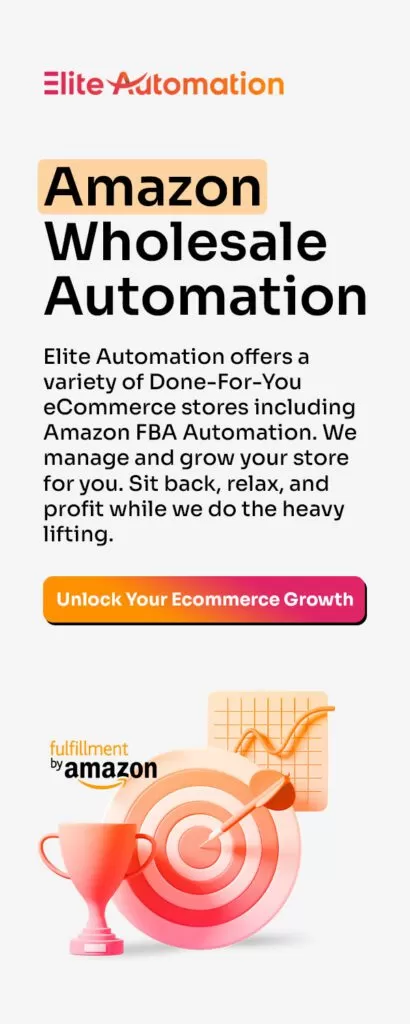Over 440,000 businesses were launched in 2021. With more people entering the e-commerce industry, the market is predicted to hit $5.1 trillion by 2026.
Starting an e-commerce store gives you a sense of freedom and achievement. On top of that, it feels there is a relatively easier barrier to entry: you have no rent to pay, no physical retail outlet to manage, and you overcome any geographical limitations.
However, an e-commerce start-up isn’t a walk in the park either. With more retailers pivoting to online sales channels, smaller sellers will face increasingly tougher competition. You need some solid strategies in place to be successful. Learn what steps to take to start an ecommerce business today!

7 Steps to Start an Ecommerce Business In 2022
COVID-19 accelerated the adoption of ecommerce, and consumer trends changed drastically. While a shift towards a more digital world offers an incredible opportunity to enter the ecommerce world, you’ll face intense competition.
Certainly, you need a striking start to attract your target customers. With more e-commerce sites, customer demands and expectations are increasing. So, cluelessly diving into e-commerce probably won’t work for you.
We’ll walk you through 7 steps to start off strong.
Conduct Customer Research
Before you dive into deeper details, plan on what you want to sell and who you want to sell it to. Without knowing your ideal customer, you cannot design what they want. Also, do not plan to sell a product just because you’re passionate about it.
Yes, being passionate about the services you offer is a plus, but do your customers want what you have to offer? If not, your products won’t sell, and your business won’t thrive in the fast-growing ecommerce world. You should know your ideal customer and what they want, how they think, and their “why”.
You can conduct online surveys, ask questions, or plan interviews to discover the demands and needs of customers. Talk to as many people as you know and share your ideas. This will help you devise your business strategy accordingly.
Pick Your Product
After knowing your ideal customers and what they seek, design your product. Don’t be intrigued by the idea of launching several products at a time – just because someone else you look up to is doing so.
As a beginner, it’s best to start small and develop your base over time. Your focus should be on quality, not quantity.
As long as you’re offering quality products to your customers, you have a chance of building brand image, earning customer loyalty, and generating more revenue.
Note that you do not have a brick and mortar store floor to fill, and that’s the beauty of ecommerce. So, it’s better to go slow. You can also choose to be a reseller and partner with a trusted wholesaler. Ensure you have proper documentation and seller permits at the ready when contacting wholesalers who offer brands you want to sell.
Packaging and Postage
Once you launch your product, it’s time to decide how your packaging will appear to customers. It’s easy to get lured into snazzy looking, branded packaging, and not surprisingly, customers love them too. But when you are just starting out, you can avoid it; otherwise, it will spike up your overall costs before you are profitable.
To begin with, your focus should be on keeping the packaging sturdy and practical. As you pack your product, jiggle it a bit and see if it moves.
If it does, you need to utilize stuffing papers, bubble wrap, etc. to protect your precious items. Nothing turns the customers off more than a damaged item, and imagine it’s your first order. First impressions mean a lot in e-commerce and word of mouth is crucial when you’re just starting!
Poor packaging and delivered item condition ultimately contribute to a negative review on your website page and a bad impression on your prospects.
Also, note that a few customers appreciate environmentally-friendly, sustainable practices by a brand.
Research shows that customers prefer eco-friendly packaging. Another survey reveals that 66% of all respondents and 75% of millennial respondents say they consider sustainability when purchasing products from a brand.
Take this to heart and adjust your practices accordingly to earn a reputation as a new business.

Play With Pricing
Once you have inventory and proper packaging decided upon, it’s time to calculate the prices of your products. You need to determine your profit margin for every product you plan to sell.
The profit margin is the degree to which your business activity will make you money. Expressed as a percentage, profit margin lets you know how many cents of profit has been generated for each dollar of sale.
Typically, it is calculated as a percentage of the selling price minus any taxes. For instance, an $11 product that costs you around $5 would generate a $6 profit or have a 60% profit margin.
This is a very basic example and excludes common business costs, so margins are typically not this high unless you manufacture and brand your own product. This being said, make sure you consider all costs including the product’s cost to you, the packaging costs, advertising spend, software costs, website hosting (Shopify, WooCommerce or Amazon fees), warehousing costs, etc.
Ideally, you’ll have a profit margin of 15-30%+. But be prepared that it won’t always happen. You’ll experience ups and downs as a start-up, and it’s perfectly normal and healthy. Seek ways to increase your profit gradually and continue building customer trust and brand awareness.
Keep the Budget Tight
Speaking of profit, make sure you keep your budget tight. Just because you started receiving orders does not mean you should design thousands of products and stock them up.
Note that the more products you’ll create, the more pressure you’ll feel about selling them. These costs add up in addition to idle inventory.
If you do not have a large budget, keep your inventory, ad spend, and start-up costs as minimal as possible.
Decide on Marketing
At first, you only need a stable internet connection and a few products to start your ecommerce business. You can begin by creating a Facebook business page or selling products directly through an Instagram account.
You also have the option to market on ecommerce sites like Amazon, eBay, Etsy, and Shopify and all social media channels (TikTok, Instagram, Facebook, Pinterest).
However, down the lane, that alone won’t be enough. You need to build a business website that represents you as a company.
Today, all reputable brands have aesthetic, appealing websites; make sure yours stands out too.

Build Your Brand Identity
Brainstorm a catchy company name and hire a graphic designer to design an eye-catching, professional logo for your company.
Additionally, make sure you’re active on social media platforms like Facebook, Twitter, Instagram, and Linkedin. Do not forget to respond to your brand mentions and engage with your customers in comments. Post polls and engaging articles and Stories.
Forget about selling your products for a while and focus on providing value to customers through enticing posts, infographics, and updates.
Lastly, take note of what your competitors are doing to target customers or audiences. While we do not recommend copying their strategies, you can learn tricks and alter your strategies accordingly. You don’t have to reinvent the wheel.
Closing Notes
Setting up your e-commerce business is certainly exciting, but can also be overwhelming.
However, if you implement an effective strategy and remain consistent and patient in the face of obstacles, you’ll earn a name in your industry.
Times are evolving, and so are consumer needs. Make sure you focus on your customer’s needs, identify their likes and dislikes, address their pain points, and conduct data analytics to optimize your overall performance.
You can go slow, but don’t give up.

